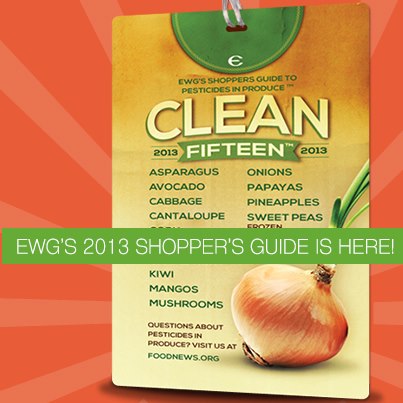TOUCHED BY LYME: Apples top this year's "Dirty Dozen" food list

The Environmental Working Group helps you determine which foods are most–and least–contaminated by pesticides.
There’s plenty of research to show that pesticides are harmful to human health, even for people who aren’t fighting chronic illness. For those who are sick, the toxic burden of pesticide-laden food can make getting well that much harder. More and more Lyme disease patients are figuring out that choosing organic foods can be an important part of their treatment plan.
But organic food can be pricy and isn’t always available. So if you can’t buy everything organic, what should you do?
The Environmental Working Group can help. Every year, they analyze pesticide residues in 48 fruits and vegetables to determine a “Dirty Dozen” list. These are the items most contaminated, which they recommend you buy organic. The 2013 list includes apples, strawberries, grapes, celery, peaches, spinach, sweet bell peppers, imported nectarines, cucumbers, potatoes, cherry tomatoes and hot peppers.
EWG’s “Clean Fifteen” list, those fruits and vegetables with the least pesticide load, consists of corn, onions, pineapples, avocados, cabbage, frozen sweet peas, papayas, mangoes, asparagus, eggplant, kiwi, grapefruit, cantaloupe, sweet potatoes and mushrooms.
EWG’s Shopper’s Guide to Pesticides in Produce, now in its 9th year, is based on the analysis of more than 28,000 samples tested by the U.S. Department of Agriculture and federal Food and Drug Administration.
Click here for more information at the EWG website.
TOUCHED BY LYME is written by Dorothy Kupcha Leland, LymeDisease.org’s VP for Education and Outreach. Contact her at dleland@lymedisease.org.




















Both organic and conventional produce is safe. Don’t fall prey to fear tactics by a fundraising organization. Learn the Facts here http://bit.ly/ZJBsHZ #CleanFifteen #Organic